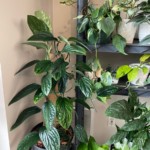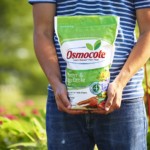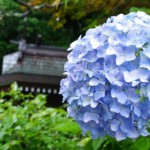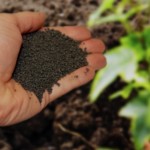Salvia, commonly known as sage, encompasses a diverse group of plants that thrive in various climates. These plants are prized not only for their ornamental value but also for their aromatic leaves and potential medicinal properties. Successful Salvia gardening involves understanding the specific needs of these plants and creating an environment conducive to their growth.
Choosing the Right Salvia Varieties
To kickstart your Salvia gardening adventure, the first and foremost step is selecting the right varieties for your climate, soil, and personal preferences. Salvia offers a diverse range of species, each with its unique characteristics and benefits. Some popular choices include Salvia officinalis (Common Sage), Salvia nemorosa (Woodland Sage), and Salvia divinorum (Diviner’s Sage). Consider factors such as bloom time, size, and color to create a diverse and visually appealing garden that caters to your aesthetic taste.
Selecting the Perfect Location
Salvia thrives in well-drained soil and full sunlight, so select a spot with at least 6-8 hours of direct sunlight per day. Ensuring that the soil is rich and drains efficiently is crucial for the overall health and growth of your Salvia plants. Take into account the specific requirements of each Salvia variety and choose a location that aligns with their unique needs.
Soil Preparation and Planting
Preparing the soil is a pivotal step in the journey to a successful Salvia garden. Enhance drainage and fertility by incorporating organic matter such as compost or well-rotted manure. This creates a nutrient-rich environment that supports healthy plant growth.
When it comes to planting Salvia, proper spacing is vital to allow for optimal air circulation and prevent overcrowding. Spring or fall is the ideal time for planting, giving the roots ample time to establish themselves before facing extreme weather conditions.
Watering and Maintenance
Salvia plants appreciate slightly moist soil, so consistent watering is key. However, it’s crucial to strike a balance and avoid overwatering to prevent root rot. Mulching around the base of the plants can help retain moisture, suppress weeds, and regulate soil temperature.
Regular pruning is encouraged to promote bushier growth and prolong the blooming period. Don’t be afraid to trim back spent flowers, as this not only maintains the plant’s appearance but also redirects energy for future blooms.
Fertilizing for Success
To keep your Salvia garden thriving, feeding your plants with a balanced, slow-release fertilizer during the growing season is essential. A phosphorus-rich fertilizer supports healthy root development, while adequate nitrogen encourages lush foliage. Following the recommended dosage on the fertilizer packaging is crucial to avoid overfeeding, as this can have detrimental effects on your Salvia plants.
Dealing with Pests and Diseases
Keep an eye out for common culprits such as aphids, spider mites, and whiteflies. Utilizing organic pest control methods, such as neem oil or insecticidal soap, helps protect your Salvia garden without harming beneficial insects. Additionally, proper spacing and good air circulation will contribute to preventing diseases like powdery mildew, ensuring the long-term vitality of your garden.
Harvesting Salvia
Harvest Salvia leaves when they are at their peak, usually before the plant flowers. This is when the essential oils are most concentrated, ensuring maximum flavor for culinary use.
Use clean, sharp scissors or pruning shears to avoid damaging the plant. Proper harvesting encourages new growth and a bushier, more robust Salvia plant.
Common Mistakes to Avoid in Salvia Gardening
To ensure a successful Salvia gardening experience, steer clear of common pitfalls. Overwatering and underwatering can lead to root problems, while improper pruning practices may hinder the plant’s natural form. Additionally, choosing a Salvia variety that is not suited to your region’s climate can result in poor growth and disappointing results.
Benefits of Salvia Gardening
Apart from the visual appeal, Salvia gardening offers additional benefits. Many Salvia varieties have medicinal properties, with leaves used for teas and extracts. Furthermore, Salvia plants attract pollinators like bees and butterflies, contributing to the overall health of your garden ecosystem.
Frequently Asked Questions (FAQs)
- Can I grow Salvia indoors?
- While Salvia plants prefer outdoor conditions, some smaller varieties can be grown indoors with proper care and adequate sunlight.
- How often should I fertilize my Salvia plants?
- Fertilize Salvia plants sparingly, preferably in the spring with a balanced, slow-release fertilizer. Too much fertilizer can lead to excessive growth and reduced flowering.
- What are the best companion plants for Salvia?
- Lavender, rosemary, and catmint are excellent companions for Salvia, creating a visually appealing and aromatic garden.
- How do I deal with pests in my Salvia garden?
- Use natural remedies like neem oil or insecticidal soap to address common pests. Regularly inspect your plants to catch any issues early.
- Can I use Salvia leaves for medicinal purposes?
- Yes, many Salvia varieties have medicinal properties. Consult reliable sources or herbalists for guidance on using Salvia leaves for teas or extracts.






